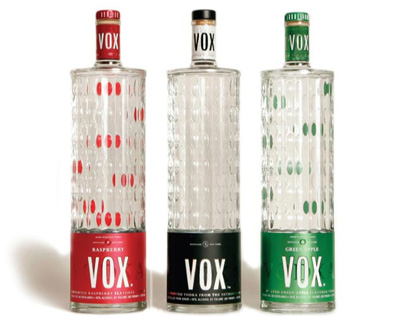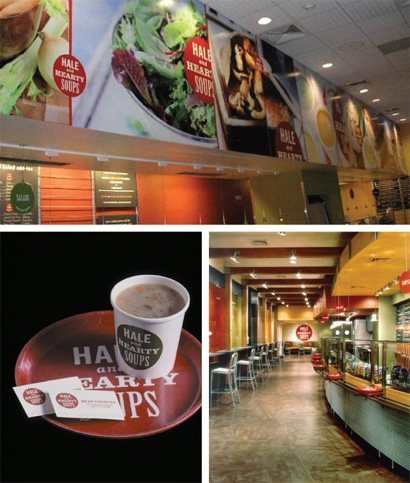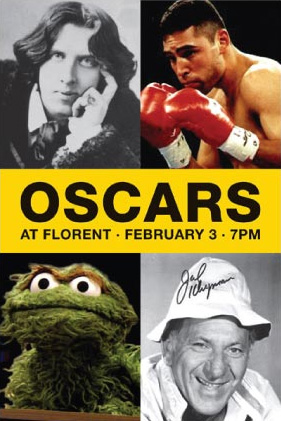Without a doubt, Douglas Riccardi was the best dressed presenter of the day, with a colorful tie, form-fitting suit, attention-grabbing socks and some of those pointy shoes that everybody wears in Italy and New York. Besides the fashion statement, Douglas’ attire for the day seemed to embody that his one-person firm is serious business … with remarkable individuality.
He started his studio, Memo, in 1993 by himself and soon experienced exponential growth by doubling the size of his firm to two employees, and has fluctuated between those two extremese — 1 and 2 — since then. Leading up to his burgeoning business, Douglas talked a little about his past experiences and how those influenced his current environment. He was first employed by Anspach Grossman Portugal, one of the leading corporate identity firms of the 1980s, where the work wasn’t extremely exciting — endless bank brochures anyone? — but he learned the value of presentation, since their clients were paying hundreds of thousands of dollars, the presentations had to be rather convincing. He then joined Tibor Kalman’s M&Co. which was the complete opposite of AGP, or as Douglas put it “I went from a job I couldn’t care, to a job I couldn’t get there early enough.” While it was a grueling pace and an immersion in design, it provided him the opportunity to interact directly with clients, something AGP would not allow, designers never met with clients. After that he became the art director for Egg magazine, where he had his first experience leading designers. He then moved to Italy where he was the corporate art director for Benneton, and then moved to Sottsass Associati, a “fabulous” Italian studio with architects, product designers and the whole flamboyancy. All these experiences let Douglas know that in forming his own studio he didn’t want to be a “suit”, nor a “design god”, or art director. He just let his personality become his studio.
One of Douglas slides showed three faces that represented his different personalities when operating his studio: Salvador Dalí, doing creative work; Otto Von Bismarck, getting things done on time and efficiently, and his way; and an unnamed 17-year-old girl, to deal with the insecurities of running a business, “will the client call?”, “what did they think of me?” and, yes, “do I look fat in this suit?”.

He then talked about the kind of clients he has. First he mentioned the collaborations that enable him to produce work that he could not offer just by himself, like his packaging for Vox Vodka, where he was able to collaborate with a product designer.

The other kind of client were the long-term relationships, where he is able to build a trust level with the client, and become an advisor on how they develop their brand. For Hale & Hearty, he has been able to help the company expand and advise on the tone of voice that they take, becoming so familiar with the brand that his input goes beyond just making good design.

And lastly he talked about the importance and fulfillment of having pro-bono clients, doing work at no cost or a reduced fee. And having fun projects around also keeps things sane, like the poster above for an Oscar party. He also delivered one of the funniest lines of the conference when he talked about doing pro-bon work for clients that promise him that the next project will have a bigger budget (or a budget, period) and that they will be able to pay him, “but the moment they have money,” said Douglas “they go straight to Pentagram.”
He then talked about dealing with being a one-person firm. That it was very important for him to treat his business like a real business, with an office that he could go to, separate it from his personal life and not, as he said “[run it] from a car, or with a child crying in the background.” I have had conference calls with Maya crying in the background so I can understand his concern — but it’s really not that horrible and the upside is that as soon as I finish the call I can go upstairs, make funny faces and get a hug from my daughter right then and there, instead of coming back at 10:00 pm and just watching her sleep. But I digress. He mentioned the importance of writing good proposals and how he was not the most adept at doing so, so he turned to Emily Ruth Cohen for help, and together they developed a strategy on how to write proper proposals. He mentioned that a good proposal from a small firm builds trust in the clients, who see something that is considered and well thought out.
As a non-sequitur, sorry: At the beginning of his presentation Douglas mentioned something interesting about his revenue. That over the years his billing has always remained steady, a very lightly fluctuating line that would differ by $10,000 or $20,000 a year. In contrast to bigger firms whose billing charts may look like a roller coaster with good and bad years, that were tied to the economy, something he was able to diffuse slightly. But instead of just feeling taking his steadiness for granted he mentioned that those highs and lows keep companies on their toes, looking for ways to improve and mitigate business situations, forcing you to make changes.
Douglas finished his presentation by talking about growth and how he saw himself evolving. He said that one of his worries that keeps him up at night, is having a vision of himself being 80 years old and having to deal with Scala Sans not opening in Suitcase. Speaking of expansion he said that he is ready to not have to design all the time and to direct younger designers and let them work the long hours and experience what he experienced when he was at M&Co. But he worries about how to make an employee’s experience great: ” What does it take to make people want to come in to work? The more people I have around, the more people I have to keep happy and inspired.” He also acknowledged the need to learn how to solicit work, not just sit by the phone and wait for it to ring, which involves figuring out what he can offer clients and what price to put on that.
The best part of the conference for me, was something Douglas said in the panel discussion, when they were talking about what it takes to put yourself in a position where you are dealing with the ultimate decision maker (a CEO, president, etc.) and not have to just deal with middle layers of people that are just looking to protect their job instead of focusing on what’s best for the project. As a one-person firm, he pointed out that he feels entitled to be in that position, that he is offering his clients the principal of the firm, the top position, not a second- or third-tier employee, so he expects the same in return. I thought that was a brilliant way of seeing it. As a two-person design firm in our case, I do feel like it’s harder to get up to that top position when dealing with larger clients (something we are actually experiencing), so getting this boost of confidence was, again, well worth the sunny Saturday spent in an auditorium.
Good luck, Douglas, with your expansion.






Doug's model felt closest to my own, so I appreciated hearing some of my own insecurities and worries reflected in his presentation. I still find myself very interested in designing and don't see giving that aspect up yet. I also know, however, there are many better designers than me, so I wonder if it would be a smarter move as a business to hire someone younger, hungrier, and more talented and teach and lead them instead. I'm at a constant struggle with the break between being a designer and being a businessman. They're not mutually exclusive, but there are times when one needs more tending than the other. Leaving more of the hands-on design activities behind would enable me to focus more on the operations of the studio to keep it going.
On May.23.2008 at 01:09 PM